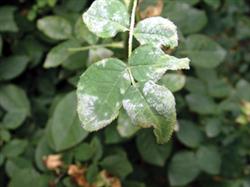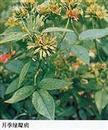Why did the rose cuttings die?

During the cutting propagation of rose, the abnormal phenomenon of browning of young leaves, browning of top tips and death may be due to the following two reasons: first, the drainage and air permeability of cutting substrate is poor, and the necessary disinfection is not carried out, so that the base of cuttings can not take root in time. Second, in the process of post-cutting management, lack of light, poor ventilation, did not pay attention to the prevention of diseases, in adverse external conditions, induced the infection of powdery mildew and brown spot, so that the new leaves and shoots withered. Rose cuttage is from early May to early July, and it is most ideal to use tender wood cuttings. The branches of the same year after flowering are selected and cut at the compound leaves of the first 5 leaflets. About 5 days after cutting, the middle and lower branches retained by hand bending should be slightly elastic, the pith of the incision is small and grayish white, the tissue is more substantial, and the axillary buds have not yet germinated. Cut the ear segment about 10 cm long as cuttings, there are about 3 to 4 buds above it, and the lower incision is preferably 0.5 cm below the node. Each compound leaf in the upper part of the cuttings retains only two cotyledons at the base, and the other leaflets are cut off, and all the leaves that want to be inserted into the substrate at the lower end of the cuttings should be cut off; then the cut cuttings are inserted into the substrate in which vermiculite and river sand are mixed in half, or the alkaline rice bran ash mixed with river sand can also be used, and the depth of cuttings is about 1x3 of the ear length, and then the flowerpot is soaked in water and covered with plastic film to protect moisture. In the first 2 to 3 days, it should be placed in a place with scattered light, and then gradually increase the light to maintain the proper temperature for rooting at about 25 ℃, and it can take root after about 15 to 20 days. After the cuttings took root, remove the cover film, give sufficient light, and regularly spray 75% chlorothalonil wettable powder 500 times to prevent the occurrence of powdery mildew and brown spot. After 1 to 2 months of cultivation, the plants were planted in pots.
- Prev

Rose lobular disease
Symptomatic rose lobular disease is a common physiological disease in northern China. Lobular disease occurs on young shoots and young leaves, and the disease is more obvious when the spring rose sprouts. The diseased branches germinated later, the leaves were narrow and slender, the leaf edges were upward, the quality was hard and brittle, the leaf color was light yellowish green, and the leaf color was uneven.
- Next

Symptoms and control of rose green petal disease
Symptoms: mainly manifested as narrow petals, green sepals or leaves, corolla green, flowers into leaves, rose green petal disease is a typical symptom. All the plants with this disease, under the same cultivation and management conditions, the plant type is shorter than the general rose varieties, the branches are multiplied, the leaf shape is narrow, the petiole and stem are more economical.
Related
- Fuxing push coffee new agricultural production and marketing class: lack of small-scale processing plants
- Jujube rice field leisure farm deep ploughing Yilan for five years to create a space for organic food and play
- Nongyu Farm-A trial of organic papaya for brave women with advanced technology
- Four points for attention in the prevention and control of diseases and insect pests of edible fungi
- How to add nutrient solution to Edible Fungi
- Is there any good way to control edible fungus mites?
- Open Inoculation Technology of Edible Fungi
- Is there any clever way to use fertilizer for edible fungus in winter?
- What agents are used to kill the pathogens of edible fungi in the mushroom shed?
- Rapid drying of Edible Fungi

